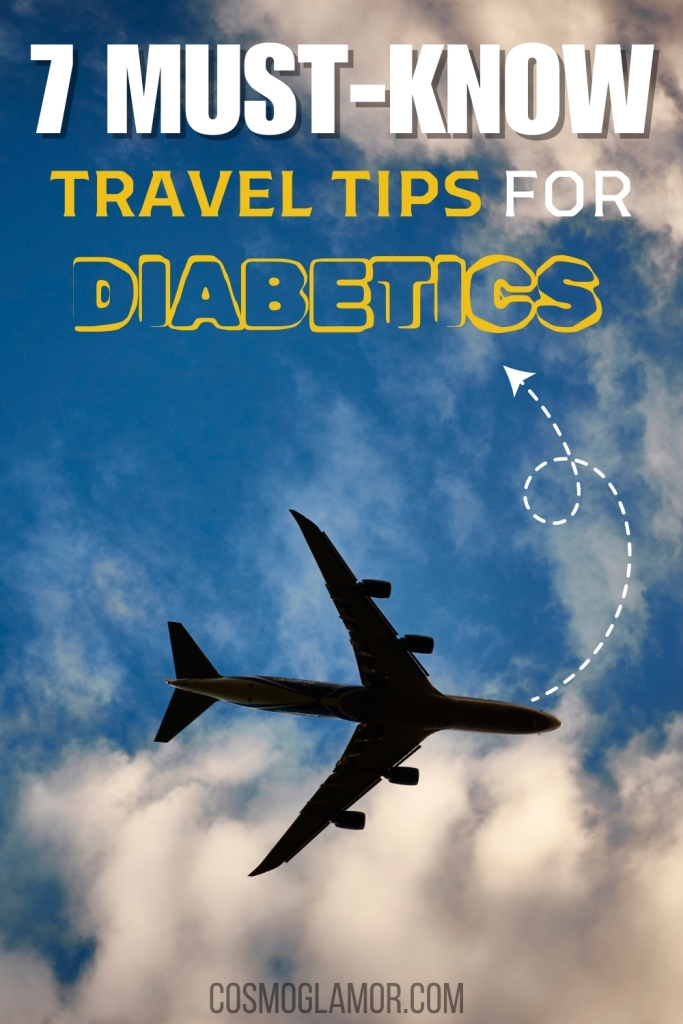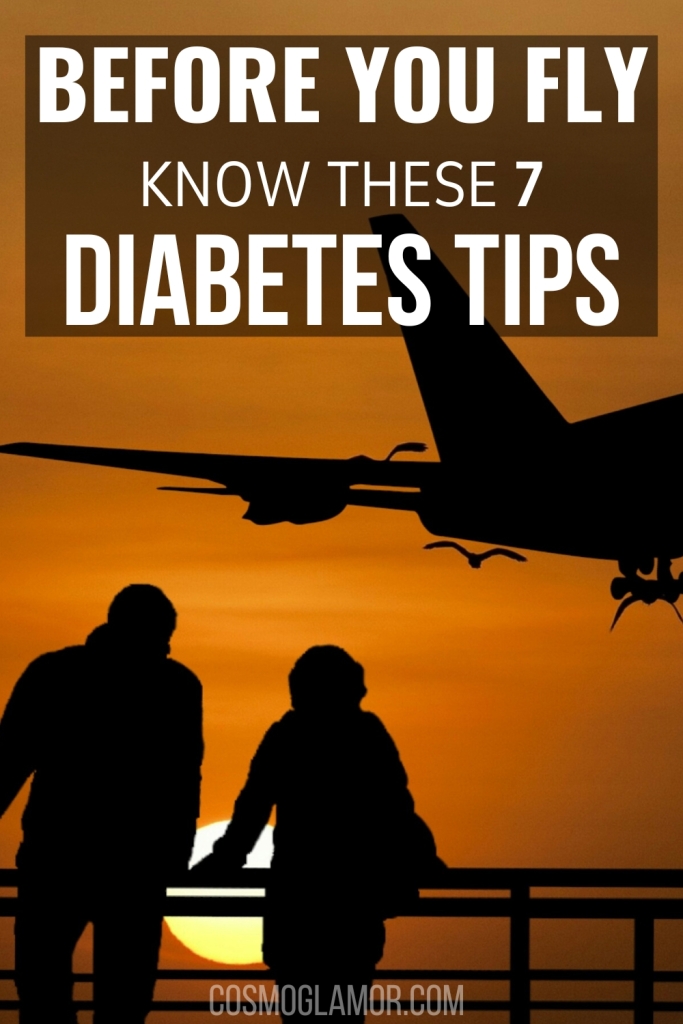The plane lurched violently, sending a ripple of nervous murmurs through the cabin. I gripped the armrests, my heart pounding a frantic rhythm against my ribs. It wasn't the turbulence that bothered me, though. It was the sinking realization that my insulin was tucked away in my checked luggage, hundreds of feet below in the cargo hold. Sweat prickled my skin as I envisioned a worst-case scenario unfolding – a severe hypoglycemic episode at 30,000 feet, with no access to the life-saving medication I needed. This, my friends, is just a taste of the unique anxieties that can accompany traveling with diabetes. But fear not, fellow adventurers! With careful planning and a dash of resourcefulness, you can conquer the world, one destination at a time, without letting diabetes hold you back.

Preparing for Takeoff: Your Pre-Travel Guide

Before you even dream of exotic locales and thrilling escapades, there's some essential groundwork to lay. Think of it as charting your course for a smooth and successful voyage.
A Visit to the Doc: Your Pre-Travel Check-up
First things first, schedule a visit with your healthcare provider. This is your chance to:
- Stock Up on Supplies: Ensure you have enough medication to last the entire trip, plus extra in case of unexpected delays or lost luggage. It's always better to err on the side of caution!
- Get a Medical Letter: This document should outline your diabetes management plan and list all your medications and supplies. It can be a lifesaver at airport security or if you need medical assistance during your travels. Think of it as your diabetes passport!
- Discuss Destination-Specific Concerns: Are you heading to a tropical paradise or a high-altitude mountain range? Your doctor can advise you on managing your diabetes in different climates and time zones. They can also provide valuable insights on local healthcare resources and potential health risks at your destination.
Packing with Purpose: Your Diabetes Travel Kit
Now for the exciting part – packing! But before you toss those swimsuits and hiking boots into your bag, remember these diabetes-specific essentials:
- Carry-on Must-Haves: Always keep your insulin, glucose meter, test strips, and fast-acting glucose sources (like glucose tablets or juice boxes) in your carry-on luggage. This ensures you have access to them at all times, even if your checked luggage decides to take a detour. Consider a dedicated carry-on bag just for your diabetes supplies, making them easily accessible during your flight.
- Organized and Accessible: Invest in a good quality travel bag or case specifically designed for diabetes supplies. This will keep everything organized and easily accessible. Look for features like insulated compartments, secure closures, and clear labeling to make managing your diabetes on the go a breeze.
- Temperature Control: Insulin is sensitive to extreme temperatures. If you're traveling to a hot climate, consider using a cooling pouch like the FRIO Insulin Cooling Wallet. This wallet uses evaporative cooling to keep insulin within a safe temperature range for up to 45 hours, even without refrigeration. For longer trips or extreme temperatures, explore insulated cases with dedicated ice packs like those offered by Pelican or MedAngel. Remember to monitor the temperature regularly and replace ice packs as needed.
Knowledge is Power: Researching Your Destination
Knowledge is power, especially when it comes to managing diabetes in unfamiliar territory.
- Destination Diabetes Resources: Are there pharmacies or hospitals near your destination that stock your specific insulin or supplies? Knowing this information can provide peace of mind. Websites like the International Diabetes Federation can help you locate diabetes resources worldwide.
- Food and Activity Considerations: Will you have access to healthy food options? What types of physical activities are you planning? Researching these aspects will help you anticipate potential challenges and plan accordingly. Browse online forums or travel blogs for firsthand accounts from other travelers with diabetes who have visited your destination.
Navigating the Airport: A Smooth Journey

Airports can be a whirlwind of stress, even without the added layer of diabetes management. But with a little preparation, you can breeze through security and arrive at your destination ready to explore.
TSA Tips for Diabetics
- Declare Your Supplies: Inform the TSA agent that you have diabetes and are carrying medical supplies. Be prepared to show your medical letter if requested. Having your supplies clearly organized and labeled can expedite the screening process.
- Request a Private Screening: If you're uncomfortable with a public screening of your supplies, you can request a private screening. This allows you to discuss your needs with TSA agents in a more comfortable setting.
- Know Your Rights: The TSA has specific guidelines for travelers with disabilities, including diabetes. Familiarize yourself with these guidelines before your trip. You can find detailed information on the TSA website or by contacting their helpline.
Staying Healthy In-Flight
- Blood Sugar Monitoring: Changes in routine, time zones, and air pressure can affect blood sugar levels. Monitor your blood sugar more frequently than usual during your flight. Set reminders on your phone or smartwatch to ensure you don't forget.
- Hydration is Key: Airplane cabins are notoriously dry. Drink plenty of water to stay hydrated and help regulate your blood sugar. Avoid sugary drinks and excessive caffeine, as these can dehydrate you and disrupt your blood sugar control.
- Move Around: Sitting for long periods can increase your risk of blood clots. Get up and walk around the cabin every hour or so. Even simple stretches in your seat can improve circulation and reduce stiffness.
Savoring the Flavors: Diabetes and Dining on the Go

Now that you've arrived, it's time to indulge in the local cuisine! But how can you navigate unfamiliar menus and still maintain balanced blood sugar levels? Here are a few tips to make dining a delightful experience:
- Plan Ahead: Research local cuisine and identify healthy options. Don't be afraid to ask restaurants about ingredients or modifications to dishes. Many restaurants are happy to accommodate dietary needs, especially with some advance notice.
- Pack Snacks: Always carry snacks with you, especially if you're planning on long excursions or activities. This prevents those dreaded blood sugar dips when meals are delayed or less-than-ideal. Nuts, seeds, fruit, and protein bars are excellent portable options.
- Be Mindful of Portions: It's easy to overindulge when you're on vacation. Be mindful of portion sizes and try to balance your meals with healthy choices. Sharing dishes or opting for appetizers instead of entrees can help with portion control.
- Embrace the Unexpected: Be adventurous and try new things! Just remember to factor in potential unknowns when calculating your insulin dosage. Start with smaller portions of unfamiliar dishes and monitor your blood sugar closely afterward.
Staying Active on the Go
One of the joys of traveling is exploring new places and engaging in exciting activities. But how can you stay active and energized while managing your diabetes?
- Adjust Insulin: If you're planning on being more active than usual, you may need to adjust your insulin dosage. Consult with your doctor before your trip to establish a plan for increased activity levels. This might involve reducing your basal insulin or adjusting your mealtime doses.
- Monitor Blood Sugar: Physical activity can affect blood sugar levels. Monitor your blood sugar more frequently during and after activities. This will help you understand how your body responds to different types of exercise and make necessary adjustments to your insulin or food intake.
- Listen to Your Body: Don't push yourself too hard. If you're feeling tired or experiencing low blood sugar, take a break. Staying hydrated and carrying fast-acting glucose sources are crucial for maintaining energy levels and preventing hypoglycemia.
Time Zone Tango: Keeping Your Body in Sync
Crossing time zones can disrupt your body's natural rhythm and affect your blood sugar control. Here's how to minimize the impact:
- Gradual Adjustment: If you're traveling across multiple time zones, try to adjust your sleep schedule gradually in the days leading up to your trip. This will help your body acclimate to the new time zone more smoothly.
- Insulin Timing: Consult with your doctor about adjusting your insulin regimen to accommodate time zone changes. They can provide specific guidance on how to adjust your basal and bolus insulin doses to maintain optimal blood sugar control throughout your journey.
- Stay Hydrated: Drinking plenty of water can help with jet lag and blood sugar regulation. Dehydration can worsen jet lag symptoms and affect your blood sugar levels, so make sure to keep those fluids up!
Navigating the Unexpected: Troubleshooting on the Road
Even the best-laid plans can encounter unexpected detours. But don't let a few bumps in the road derail your adventure. Here's how to handle common travel challenges:
Lost or Damaged Supplies
- The “Just in Case” Stash: This is where that extra supply of medication you packed comes in handy. Always keep a small emergency kit separate from your main supply. This kit should include essential items like insulin, syringes, a glucose meter, and fast-acting glucose sources.
- Pharmacy Power: Remember that research you did on local pharmacies? Now's the time to put it to use. Your doctor's letter can be invaluable in obtaining replacement supplies. If you use a specific type of insulin or device, consider contacting the manufacturer's international support line for assistance in locating supplies at your destination.
- Embassy Assistance: If you're traveling abroad, your local embassy can help you connect with medical resources and navigate any language barriers. They can also assist with lost or stolen passports and other travel emergencies.
Sick Days and Emergencies
- Be Prepared: Pack a copy of your diabetes management plan and emergency contact information. This will ensure you have essential information readily available in case of unexpected illness or medical emergencies. Consider storing a digital copy on your phone or in cloud storage for easy access.
- Know the Local System: Familiarize yourself with the local emergency services and how to access medical care. Research local hospitals, clinics, and pharmacies in advance. If you have travel insurance, keep their contact information handy.
- Don't Hesitate: If you're feeling unwell or experiencing severe blood sugar fluctuations, seek medical attention immediately. Don't hesitate to reach out to your travel companions, hotel staff, or local authorities for assistance.
Technology at Your Fingertips: Diabetes Travel Apps and Gadgets

In today's digital age, technology can be a powerful ally in managing diabetes while traveling. From tracking your blood sugar to counting carbs and setting medication reminders, there's an app or gadget for almost every need.
Apps for Diabetes Management
- Glucose Tracking: Apps like mySugr, OneTouch Reveal, and Glooko allow you to log your blood sugar readings, track your insulin doses, and monitor your overall diabetes management. These apps can generate reports and graphs that provide valuable insights into your blood sugar patterns and help you identify areas for improvement.
- Carb Counting: CalorieKing, MyFitnessPal, and Carb Manager can help you estimate the carbohydrate content of meals, especially when you're trying new foods. These apps often include extensive food databases and barcode scanners for quick and easy carb counting.
- Medication Reminders: Set reminders for taking your medication or checking your blood sugar with apps like Medisafe or Mango Health. These apps can help you stay on track with your diabetes management routine, even when your schedule is disrupted by travel.
Gadgets for Globetrotters
- Continuous Glucose Monitors (CGMs): CGMs provide real-time glucose data, allowing you to see trends and make adjustments to your insulin dosage as needed. They eliminate the need for frequent finger-prick tests and offer a more comprehensive view of your blood sugar fluctuations throughout the day and night.
- Insulin Pumps: Insulin pumps offer a more convenient and flexible way to deliver insulin, especially when you're on the go. They can be discreetly worn under clothing and programmed to deliver precise doses of insulin based on your individual needs.
- Portable Power Banks: Ensure your devices are always charged with a reliable portable power bank. This is essential for keeping your phone, CGM receiver, and other devices powered up, especially during long flights or excursions where access to outlets may be limited.
Choosing the Right Tech: When selecting apps and gadgets, consider your individual needs and preferences. Look for user-friendly interfaces, reliable data synchronization, and features that align with your diabetes management style. Consult with your healthcare team for recommendations and guidance on integrating these tools into your travel routine.
Beyond the Practical: The Emotional Side of Diabetes and Travel

While practical tips and gadgets are essential, managing diabetes while traveling also involves navigating a range of emotions. It's important to acknowledge these feelings and develop strategies for maintaining a positive mindset throughout your journey.
Conquering Fear and Anxiety
Traveling with a chronic condition like diabetes can bring about feelings of fear and anxiety. Will I have access to the supplies I need? What if I experience a medical emergency in a foreign country? These concerns are valid, but don't let them overshadow the excitement of your adventure.
- Plan and Prepare: Feeling in control of your diabetes management can help reduce anxiety. Thorough planning, packing essential supplies, and researching your destination can instill a sense of confidence and preparedness.
- Connect with Others: Talk to other people with diabetes who have traveled. Sharing experiences and tips can be incredibly reassuring. Online forums and support groups can connect you with a community of fellow travelers with diabetes.
- Focus on the Positive: Remember why you're traveling in the first place. Focus on the excitement of exploring new places, experiencing different cultures, and creating memories that will last a lifetime. Visualize yourself enjoying your trip and achieving your travel goals.
Advocating for Yourself
- Communicate Your Needs: Don't be afraid to ask for what you need, whether it's a seat with more legroom on a plane, a refrigerator in your hotel room to store your insulin, or a restaurant modification to make a dish more diabetes-friendly.
- Educate Others: Take the opportunity to educate people about diabetes and dispel any misconceptions. Sharing your experiences can raise awareness and foster understanding.
- Be Your Own Advocate: You are the expert on your diabetes. Trust your instincts and make decisions that are right for you. Don't let anyone dismiss your concerns or dictate how you should manage your health.
Sweet Adventures Await!
Traveling with diabetes may require a bit more planning and preparation, but it's absolutely possible to have incredible adventures without compromising your health. Remember, diabetes doesn't define you. It's just one aspect of your journey. So, pack your bags, embrace the unknown, and let the world be your oyster!
As I stood on the precipice of the Grand Canyon, the wind whipping through my hair and the vastness of the landscape stretching before me, I realized that my initial anxiety on the plane had been replaced by a sense of triumph. Not only had I navigated the challenges of traveling with diabetes, but I had also discovered a newfound confidence in my ability to manage my health in any situation. The world was indeed my oyster, and I was ready to savor every moment.
Remember, with the right mindset and a bit of preparation, you can conquer any travel challenge and create memories that will last a lifetime. So, go forth and explore! The world is waiting.
Resources:
- Travel-related morbidity in travelers with insulin-dependent diabetes mellitus
- Diabetes and travel
- The effect of travel on diabetes control
- Travel with Diabetes: A Comprehensive Review for Clinicians
- Air Travel With Diabetes
- Managing diabetes during travel: Practical recommendations for patients and physicians
- The challenges of traveling with diabetes







